188. It seems reasonable to
assume the Hindu nakshatra system -
with its leading stars at the Full
Moon on the opposite side of the sky
compared to those which could not be observed
close to the Sun - was well known on Easter Island
and that line b1 on the C tablet could have
corresponded to the beginning of such a
structure:
|
ARIES: |
|
1 |
Ashvini |
β and γ Arietis |
Horse's head |
April 17 (107) |
|
wife of the Ashvins |
Sheratan and Mesarthim |
|
2 |
Bharani |
35, 39, and 41 Arietis |
Yoni, the female organ
of reproduction |
May 1 (121) |
|
the bearer |
Musca Borealis |
There were 14 days from
April 17 (290 - 183) to May
1 (11 * 11), but there were only 13
glyphs:
 |
 |
 |
 |
7 |
|
Cb1-1 (393) |
Cb1-2 |
Cb1-3 |
Cb1-4 (366 + 30) |
|
E
tupu - ki roto |
o
te hau tea |
ki
te henua - te maro |
|
CLOSE TO THE FULL
MOON (and nakshatra
dates): |
|
Al Sharatain-1 /
Ashvini-1 /
Bond-16 (Dog) /
Mahrū-sha-rishu-ku-1
(Front of the Head
of Ku)
SEGIN = ε
Cassiopeia,
MESARTHIM = γ
Arietis,
ψ Phoenicis (27.2),
SHERATAN
(Pair of Signs) = β
Arietis,
φ Phoenicis (27.4) |
ι Arietis (28.0), λ
Arietis (28.2), υ
Ceti (28.8) |
ALRISHA
(The Knot) = α
Piscium,
χ Phoenicis (29.2),
ALAMAK (Caracal) = γ
Andromedae
(29.7) |
Arku-sha-rishu-ku-2
(Back of the Head of
Ku)
2h (30.4)
κ Arietis (30.3),
HAMAL
(Sheep) = α Arietis
(30.5)
ALKES (α Crateris)
|
|
April 17 (290
- 183) |
18 (108) |
19 (*29) |
4-20 |
 |
 |
 |
 |
12 |
|
Cb1-12 (354 +
50) |
Cb1-13 |
Cb1-14 (350 + 8
* 7) |
Cb1-15 (407) |
|
manu rere -
kua rere ga manu
- ki te ragi |
eaha te nuku
erua |
koia kua huki |
e niu tu |
|
CLOSE TO THE
FULL MOON (and
nakshatra
dates): |
|
ν Arietis
(38.5), δ, ε
Ceti (38.8) |
μ Arietis
(39.4),
HEAD OF THE FLY
= 35 Arietis
(39.6),
KAFFALJIDHMA(Part
of a Hand)
= γ
Ceti,
θ Persei (39.8) |
π Ceti, ο
Arietis (40.0),
ANGETENAR
(Bend in the
River) = τ¹
Eridani,
μ Ceti (40.2),
RIGHT WING
= 39 Arietis
(40.9) |
Bharani-2 (Yoni)
/
Stomach-17
(Pheasant)
π Arietis
(41.2),
MIRAM (Next to
the Pleiades) =
η Persei
(41.3),
BHARANI
= 41 Arietis
(41.4),
τ² Eridani, σ
Arietis (41.7) |
TA LING (Great
Mound)
= τ Persei
(42.4) |
|
28 (118) |
(4 * 29½ + 1) |
April 30 |
May 1 (121) |
2 |
|
The sequence of
heliacal star
dates in the
text seems here
to make a jump
ahead with 1
place, because
*366 = 365 + 1
and from
Arcturus, Syrma
(*215) to Zuben
Elgenubi (*224)
there were not 9
but 8 glyphs.
Likewise were
there 9
precessional
days from *32 to
*41 (Bharani).
The sky dome was
moving said
Metoro where the
Full Moon
reached Mira
(*33).
Maeva.
T. 1. Move.
Rangi-maeva
= Moving Sky
(name of a
marae). 2.
Greet, greeting.
Henry. |
And therefore there surely ought to be signs of
the Pleiades and of Aldebaran in their proper
places in the text:
|
TAURUS: |
|
3 |
Krittikā |
M 45 Tauri |
Knife or spear |
May 15 (135) |
|
the nurses of
Kārttikeya |
The Pleiades |
|
4 |
Rohini |
α Tauri |
Cart or chariot, temple,
banyan tree |
May 28 (148) |
|
the red one |
Aldebaran |
 |
 |
 |
 |
|
Cb2-4 (420 = 285 + 135) |
Cb2-5 (392 + 29) |
Cb2-6 (30) |
Cb2-7 (423) |
|
te ua |
koia ra |
kua tuku ki to
mata - ki tona tukuga |
e kiore - henua
- pa rei |
|
CLOSE TO THE FULL MOON
ON EASTER ISLAND: |
|
Al Thurayya-27 (Many Little
Ones) /
Krittikā-3 (Nurses of
Kārttikeya)
/
TAU-ONO
(Six Stones)
ATIKS = ο Persei, RANA (Frog) =
δ Eridani
(55.1),
CELAENO (16 Tauri), ELECTRA
(17), TAYGETA (19),
ν Persei
(55.3),
MAIA (20), ASTEROPE (21), MEROPE
(23)
(55.6) |
Hairy Head-18
(Cockerel) /
Temennu-3
(Foundation Stone)
ALCYONE
(56.1),
PLEIONE
(28 Tauri),
ATLAS
(27)
(56.3) |
MENKHIB
(Next to the Pleiades) = ζ Persei
(57.6)
PORRIMA (γ Virginis)
|
ZAURAK
(The Boat) = γ Eridani
(58.9) |
|
15 (135 + 365 = 500) |
May 16 (136) |
17 |
18 (*58) |
|
ºMay 11 |
12 (132) |
13 |
14 (*54) |
|
4-18 (473 = 108 + 365) |
'April 19 |
4-20 |
21 (111) |
|
"April 4 |
5 (501 - 41 = 460) |
6 (*16) |
7 |
|
MARCH 12 |
13 |
3-14 (73) |
15 |
|
417 (= 501 - 84) |
52 |
53 (= 73 - 20) |
54 (= *58 - 4) |
|
... The
Mahabharata
insists on six as the
number of the Pleiades as well
as of the mothers of Skanda
and gives a very broad and wild
description of the birth and the
installation of Kartikeya
'by the assembled gods ... as
their generalissimo', which is
shattering, somehow, driving
home how little one understands
as yet. The least which can be
said, assuredly: Mars was
'installed' during a more or
less close conjunction of all
planets; in Mbh. 9.45 (p. 133)
it is stressed that the powerful
gods assembled 'all poured water
upon Skanda, even as the
gods had poured water on the
head of Varuna, the lord
of waters, for investing him
with dominion'. And this
'investiture' took place at the
beginning of the Krita Yuga,
the Golden Age
... |
 |
 |
 |
|
Cb2-8 (424) |
Cb2-9 (33) |
Cb2-10 |
|
Niu |
moe te goe |
|
λ Tauri (59.3), ν Tauri
(59.9) |
4h (60.9)
JĪSHUĬ (Piled-up Waters) = λ
Persei
(60.7)
COR CAROLI (α Canum Ven.) |
υ Persei (61.2) |
|
May 19 |
20 (140) |
21 (*61) |
 |
 |
 |
| Cb2-11 (35) |
Cb2-12 (428) |
Cb2-13 (→ 63) |
| ka moe i roto |
te henua |
ihe manu ra |
 |
 |
|
raaraa |
Cb2-12 |
|
... The chief thus makes his appearance at Lakeba from the sea, as a stranger to the land. Disembarking at the capital village of Tubou, he is led first to the chiefly house (vale levu) and next day to the central ceremonial ground (raaraa) of the island ... |
|
| INVISIBLY CLOSE TO THE SUN NORTH OF THE EQUATOR: |
| χ Scorpii (245.1), YED PRIOR (Hand in Front) = δ Ophiuchi, δ Tr. Austr. (245.5) |
YED POSTERIOR (Hand Behind) = ε Ophiuchi, RUKBALGETHI SHEMALI = τ Herculis (246.6). δ Apodis (246.7), ο Scorpii (246.8) |
Heart-5 (Fox)
σ SCORPII (247.0), HEJIAN = γ Herculis (247.2), ψ Ophiuchi (247.7) |
| 21 (325 → Julian equinox) |
Nov 22 (508 - 182) |
23 (327 = 264 + 63) |
| SEPT 18 (*181) |
19 |
20 (263 = 200 + 63) |
| 241 |
242 |
243 = 327 - 84 |
|
... The manik, with the tzab, or serpent's rattles as prefix, runs across Madrid tz. 22 , the figures in the pictures all holding the rattle; it runs across the hunting scenes of Madrid tz. 61, 62, and finally appears in all four clauses of tz. 175, the so-called 'baptism' tzolkin. It seems impossible, with all this, to avoid assigning the value of grasping or receiving. But in the final confirmation, we have the direct evidence of the signs for East and West. For the East we have the glyph Ahau-Kin, the Lord Sun, the Lord of Day; for the West we have Manik-Kin, exactly corresponding to the term Chikin, the biting or eating of the Sun, seizing it in the mouth.

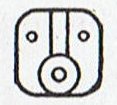 
The pictures (from Gates) show east, north, west, and south; respectively (the lower two glyphs) 'Lord' (Ahau) and 'grasp' (Manik). Manik was the 7th day sign of the 20 and Ahau the last ... |
| CLOSE TO THE FULL MOON ON EASTER ISLAND: |
| BEID (Egg) = ο¹ Eridani (62.2), μ Persei (62.8) VINDEMIATRIX ( ε Virginis) |
Al Dabarān-2 (The Follower)
HYADUM I = γ Tauri (63.4) |
HYADUM II = δ¹ Tauri (64.2) |
| May 22 |
23 (508 = 143 + 365) |
24 (144 = 12 * 12) |
| ºMay 18 (*58) |
19 (504 = 139 + 365) |
20 (140) |
| 'April 25 (115) |
26 |
27 |
| "April 11 (101) |
12 |
13 |
| MARCH 19 (78 = 6 * 13) |
20 |
21 (0h) |
| 58 = 115 - 57 |
59 |
60 = 140 - 80 |
|
... Later on in this series of rituals, the Chorti go through a ceremony they call raising the sky. This ritual takes place at midnight on the twenty-fifth of April and continues each night until the rains arrive. In this ceremony two diviners and their wives sit on benches so that they occupy the corner positions of the cosmic square. They take their seats in the same order as the stones were placed, with the men on the eastern side and the women on the west. The ritual actions of sitting down and lifting upward are done with great precision and care, because they are directly related to the actions done by the gods at Creation. The people represent the gods of the four corners and the clouds that cover the earth. As they rise from their seats, they metaphorically lift the sky. If their lifting motion is uneven, the rains will be irregular and harmful ...

|
 |
 |
 |
| Cb2-14 (430) |
Cb2-15 |
Cb2-16 (40) |
| kua pua to hau |
te kahi huga |
kiore - henua |
| Hu. 1. Breaking of wind. T Mgv., uu, to break wind. Mq., Ta.: hu, id. 2. Whistling of the wind, to blow, tempest, high wind. P Pau.: huga, a hurricane. Churchill. Mgv.: hu, to burst, to crackle, to snap. Ha.: hu, a noise. Churchill. |
| Uga. 1. To send, to descpatch, to exhort, to deegate, to excite, to admit, to expel (huga); huga mai, to bring in; hakauga, to instigate, to intrigue, to conduct, to bring, to congratulate. T Mgv.: uga, to send, to despatch. Mq.: una, uka, to send a message, to urge. Ta.: ua, to expel, to chase. 2. Ugamoa, thin, leanness (hugamoa). 3. (Ugauaga) Hakaugauga, relaxed. Churchill. |
... According to Gylfaginning, following the murder of Baldr by Loki, the other gods brought his body down to the sea and laid him to rest on the ship. They would have launched it out into the water and kindled a funeral pyre for Baldr but were unable to move the great vessel without the help of the giantess Hyrrokkin, who was sent for out of Jötunheim. She then flung the ship so violently down the rollers at the first push that flames appeared and the earth trembled, much to the annoyance of Thor. Along with Baldr, his wife Nanna was also borne to the funeral pyre after she had died of grief. As Thor was consecrating the fire with his hammer Mjolnir, a dwarf named Litr began cavorting at his feet. Thor then kicked him into the flames and the dwarf was burned up as well ...
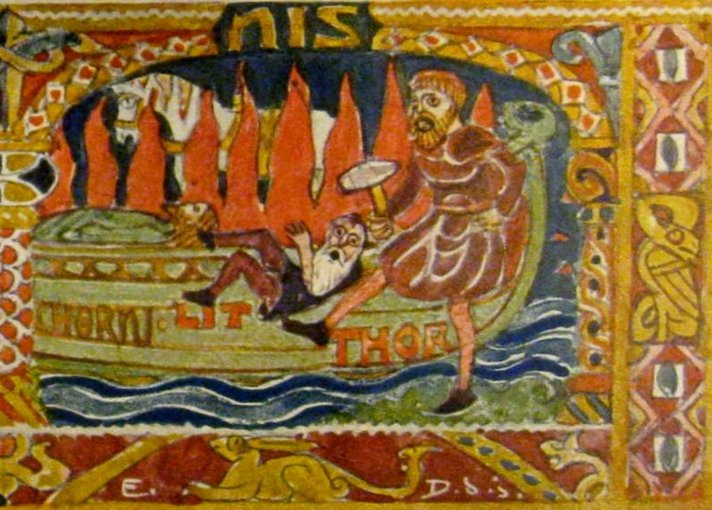
... They walked in crowds when they arrived at Tulan, and there was no fire. Only those with Tohil had it: this was the tribe whose god was first to generate fire. How it was generated is not clear. Their fire was already burning when Jaguar Quitze and Jaguar Night first saw it: 'Alas! Fire has not yet become ours. We'll die from the cold', they said. And then Tohil spoke: 'Do not grieve. You will have your own even when the fire you're talking about has been lost', Tohil told them. 'Aren't you a true god! Our sustenance and our support! Our god!' they said when they gave thanks for what Tohil had said. 'Very well, in truth, I am your god: so be it. I am your lord: so be it,' the penitents and sacrificers were told by Tohil. And this was the warming of the tribes. They were pleased by their fire. After that a great downpour began, which cut short the fire of the tribes. And hail fell thickly on all the tribes, and their fires were put out by the hail. Their fires didn't start up again. So then Jaguar Quitze and Jaguar Night asked for their fire again: 'Tohil, we'll be finished off by the cold', they told Tohil. 'Well, do not grive', said Tohil. Then he started a fire. He pivoted inside his sandal ...
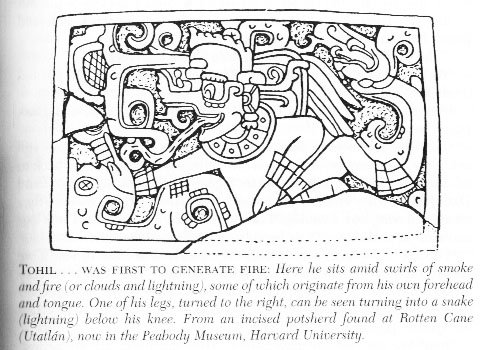
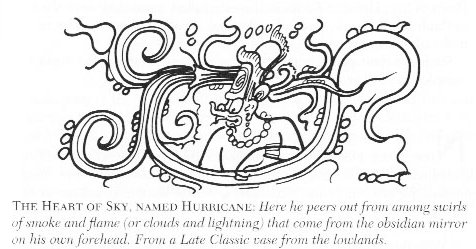
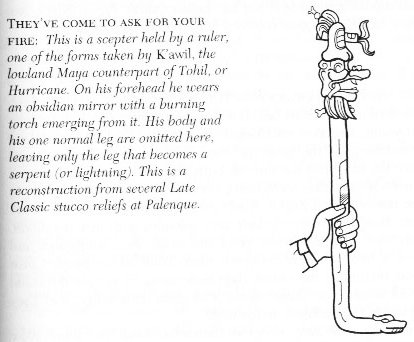
|
| INVISIBLY CLOSE TO THE SUN NORTH OF THE EQUATOR: |
| ρ Ophiuchi (248.1), KAJAM = ω Herculis (248.3), χ Ophiuchi (248.5), SHE LOW (Market Tower) = υ Ophiuchi, Tr. Austr. (248.7), ζ Tr. Austr. (248.8) |
Al Kalb-16 (The Heart) / Jyeshtha-18 / ANA-MUA-1 (Entrance pillar)
ANTARES = α Scorpii (249.1), MARFIK (Elbow) = λ Ophiuchi, φ Ophiuchi (249.5), ω Ophiuchi (249.8) |
γ Apodis (250.1), σ Herculis (250.3), θ Tr. Austr. (250.6), τ Scorpii (250.7) |
| 11-24 (*248) |
25 |
26 (330 = 147 + 183) |
| SEPT 21 (264) |
EQUINOX (*185 = *249 - *64) |
23 |
| 244 = 264 - 20 |
245 = 329 - 84 |
246 |
| CLOSE TO THE FULL MOON ON EASTER ISLAND: |
| Net-19 (Crow)
AIN (Eye) = ε Tauri, θ¹ Tauri, θ² Tauri (65.7) |
no star listed (66) |
no star listed (67) |
| May 25 (145 = 290 / 2) |
26 |
27 |
| ºMay 21 (141) |
22 |
23 |
| 'April 28 (118 = 4 * 29½) |
29 |
30 |
| "April 14 (104 = 8 * 13) |
15 |
16 |
| MARCH 22 |
23 |
3-24 (*3) |
| 61 = 81 - 20 |
62 = 146 - 84 |
63 = 120 - 57 |
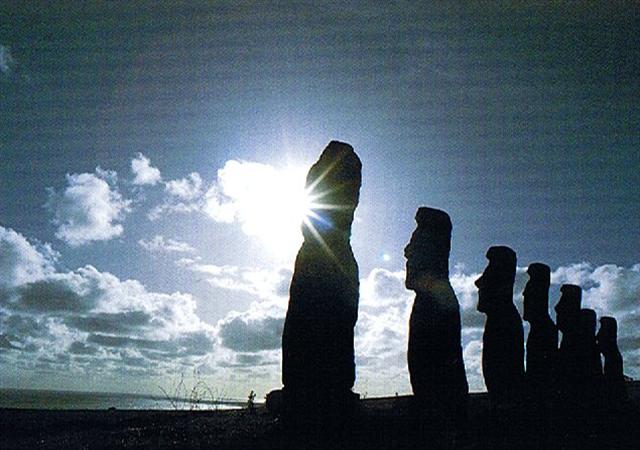
... On the late afternoon of the June solstice, towards sunset, we reached Ahu Akivi near the centre of the western side of Easter Island. This is an inland site, 3 kilometers from the coast. Like Ahu Nau Nau at Anakena, it has seven Moai, but in this case none of them have topknots and, uniquely, all face west towards the sea - which is clearly visible from the high point on which they stand.
There is a curious tradition concerning these grizzled, otherworldly statues, solemn and powerful, with their blank, aloof eye-sockets gazing out over the limitless ocean. Like most of the other Moai of Easter Island the local belief is that they died, long ago, at the time when mana - magic - supposedly fled from the island never to return. However, in common with only a very few of the other Moai, it is believed that these particular statues still have the power, twice a year, to transform themselves into aringa ora - literally 'living faces' - a concept startingly similar to the ancient Egyptian notion that statues became 'living images' (sheshep ankh) after undergoing the ceremony of the 'opening of the mouth and the eyes'. Statues at Angkor were likewise considered to be lifeless until their eyes had been symbolically 'opened'.
The great stone Moai of Easter Island were at one time equipped with beautiful inlaid eyes of white coral and red scoria. In a number of cases - though not at Ahu Akivi - sufficient fragments have been found to make restoration possible, showing that the figures originally gazed up at an angle towards the sky. It is therefore easy to guess why this island was once called Mata-Ki-Te-Rangi, 'Eyes Looking at Heaven'. On a moonlit night its hundreds of 'living' statues scanning the stars with glowing coral eyes would have seemed like mythic astronomers peering into the cosmos. And in the heat of the day those same eyes would have tracked the path of the sun, which the ancient Egyptians called the 'Path of Horus' or the 'Path of Ra'. This was also the 'path' pursued by the Akhu Shemsu Hor, the 'Followers of Horus', for whom the exclamation Ankh'Hor - 'the god Horus Lives' - would have been an everyday usage.
The principal astronomical alignments of the great temple of Angkor Wat in Cambodia are towards sunrise on the December solstice and sunrise on the March equinox - respectively midwinter and the beginning of spring in the northern hemisphere. The two moments in the year when Easter Island traditions say that the Moai of Ahu Akivi come alive and are 'particularly meaningful' are the June solstice and the September equinox - respectively midwinter and the beginning of spring in these southern latitudes. Rigorous archaeoastronomical studies by William Mulloy, William Liller, Edmundo Edwards, Malcolm Clark and others have confirmed that the east façade of Ahu Akivi does have a very definite equinoctial orientation and, indeed, that 'the complex was designed to mark the time of the equinoxes' ... |
Empty eye sockets could indicate the dark time before light ('fire') arrived, when the golden fleece of the Lion was empty:
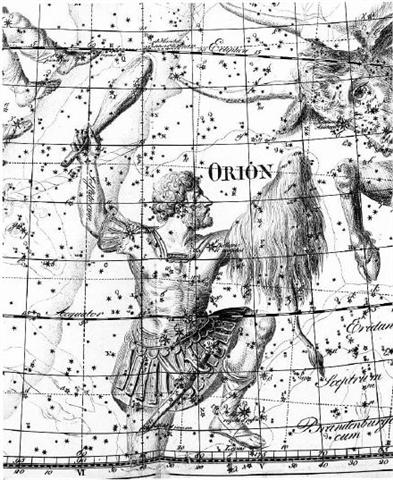
 |
 |
 |
 |
 |
| Cb2-17 (41) |
Cb2-18 |
Cb2-19 |
Cb2-20 (436) |
Cb2-21 (45) |
| manu rere - toga |
manu |
toga |
ka tuu te toga o te manu |
kua tapu - no te manu |
|
Toga. 1. Winter season. Two seasons used to be distinguished in ancient times: hora, summer, and toga, winter. 2. To lean against somehing; to hold something fast; support, post supporting the roof. 3. To throw something with a sudden movement. 4. To feed oneself, to eat enough; e-toga koe ana oho ki te aga, eat well first when you go to work. Vanaga. 1. Winter. P Pau., Mgv.: toga, south. Mq.: tuatoka, east wind. Ta.: toa, south. 2. Column, prop; togatoga, prop, stay. Togariki, northeast wind. Churchill.
Wooden platform for a dead chief: ka tuu i te toga (Bb8-42), when the wooden platform has been erected. Barthel 2.
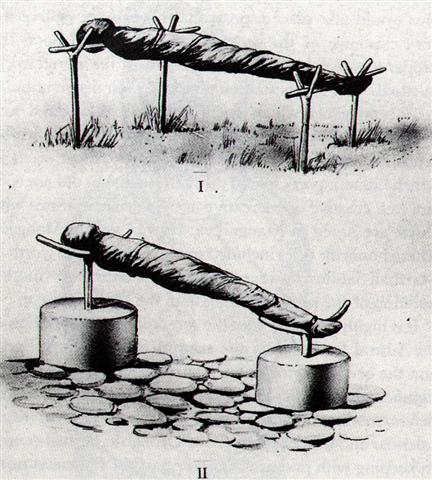 |
| INVISIBLY CLOSE TO THE SUN NORTH OF THE EQUATOR: |
| HAN = ζ Ophiuchi (251.0) |
ζ Herculis, η Tr. Austr. (252.1), η Herculis, β Apodis (252.5) |
ATRIA = α Tr. Austr. (253.9) |
Tail-6 (Tiger)
WEI (Tail) = ε Scorpii, η Arae (254.3),
DENEBAKRAB = μ Scorpii (254.7) |
ι Ophiuchi (255.3), GRAFIAS = ζ Scorpii (255.4) |
| Nov 27 |
28 |
29 |
30 |
Dec 1 (335) |
| "Oct 21 (290) |
22 |
23 |
24 |
25 |
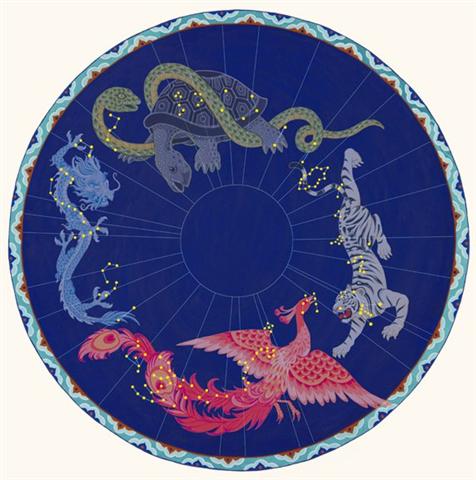 |
| CLOSE TO THE FULL MOON ON EASTER ISLAND: |
| Rohini-4 (Red One) / Pidnu-sha-Shame-4 (Furrow of Heaven) / ANA-MURI-2 (Rear pillar - at the foot of which was the place for tattooing) ALDEBARAN = α Tauri (68.2), THEEMIN = υ² Eridani (68.5) |
no star listed (69) |
no star listed (70) |
TABIT = π³ Orionis (71.7), π² Orionis (71.9) |
π4 Orionis (72.1), ο¹ Orionis (72.4), π5 Orionis (72.8) |
| May 28 (107 + 41) |
29 |
30 |
31 |
June 1 (152) |
| "April 17 (290 - 183) |
18 |
19 |
20 |
21 (111) |
|
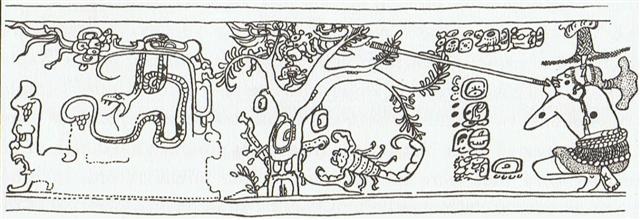
... This pot depicts one of the Hero Twins (One-Ahaw in the Classic texts and One-Hunaphu in the K'iche' Popol Vuh) and a great bird who is trying to land in a huge ceiba tree heavy with fruit. This mythical bird is Itzam-Yeh, Classic prototype of Wuqub-Kaqix, 'Seven-Macaw', of Popol Vuh fame. In that story, in the time before the sky was lifted up to make room for the light, the vainglorious Seven-Macaw imagined himself to be the sun. Offended by his pride, the Hero Twins humbled him by breaking his beautiful shining tooth with a pellet from their blowgun. This pot shows One-Ahaw aiming at the bird as he swoops down to land in his tree. As Itzam-Yeh lands on his perch, the text tells us he is 'entering or becoming the sky'.
This particular 'sky-entering' is not the one mentioned in the Palenque text. It is the final event that occurred in the previous creation before the universe was remade. Before the sky could be raised and the real sun revealed in all its splendor, the Hero Twins had to put the false sun, Itzam-Yeh, in his place. If the date on this pot corresponds to that pre-Columbian event, as we believe it does, then Itzam-Yeh was defeated on 12.18.4.5.0.1 Ahaw 3 K'ank'in (May 28, 3149 B.C.). After the new universe was finally brought into existence, First Father also entered the sky by landing in the tree, just as Itzam-Yeh did ... |
 |
 |
 |
 |
| Cb2-22 |
Cb2-23 |
Cb2-24 (440) |
Cb2-25 (49) |
| ku kikiu - i te henua |
koia ra |
tagata tua ivi - te henua |
tagata tua ivi - ki te henua |
| κ Ophiuchi (256.2), ζ Arae (256.5), ε Arae (256.8), CUJAM = ε Herculi (256.9) |
no star listed (257) |
17h (258.7)
ARRAKIS = μ Draconis (258.7)
|
Mula-19
(The Root) SABIK = η Ophiuchi (259.7), η Scorpii (259.9) |
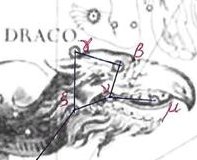 |
| π¹ Orionis (73.0), ο² Orionis (73.4),
HASSALEH = ι Aurigae (73.6), π6 Orionis (73.9) |
ALMAAZ (He Goat) = ε Aurigae (74.7),
HAEDUS I = ζ Aurigae (74.8) |
HAEDUS II = η Aurigae
(75.9) |
5h (76.1)
ε Leporis (76.0),
CURSA = β Eridani (76.4), λ Eridani (76.7) |
 |
Tattooing creates dark patterns and with
heliacal Antares marking the entrance to the
southern summer the entrance to the dark
winter half of the year ought to be at
Aldebaran (the rear pillar, Ana-muri).
... He continued travelling until he reached
the house of Uetonga, whose name all
men know: he was the tattoo expert of the
world below, and the origin and source of
all the tattoo designs in this world.
|
Ue.
1. Alas. Mq.: ue, to
groan. 2. To beg (ui).
Ueue: 1. To shake (eueue);
kirikiri ueue, stone for
sling. PS Pau.: ueue, to
shake the head. Mq.: kaueue,
to shake. Ta.: ue, id. Sa.:
lue, to shake, To.: ue'í,
to shake, to move; luelue, to
move, to roll as a vessel in a calm.
Niuē: luelue, to quake, to
shake. Uvea: uei, to shake;
ueue, to move. Viti: ue,
to move in a confused or tumultous
manner. 2. To lace. Churchill.
Uéué,
to move about, to flutter;
he-uéué te kahu i te tokerau,
the clothes flutter in the wind;
poki oho ta'e uéué, obedient
child. Vanaga. |
Uetonga
was at work tattooing the face of a chief.
This chief was lying on the ground with his
hands clenched and his toes twitching while
the father of Niwareka worked at his
face with a bone of many sharpened points,
and Mataora was greatly surprised to
see that blood was flowing from the cheeks
of that chief. Mataora had his own
moko, it was done here in the world
above, but it was painted on with ochre and
blue clay. Mataora had not seen such
moko as Uetonga was making,
and he said to him, 'You are doing that in
the wrong way, O old one. We do not do it
thus.'
'Quite so,' replied Uetonga, 'you do
not do it thus. But yours is the way that is
wrong. What you do above there is tuhi,
it is only fit for wood. You see,' he said,
putting forth his hand to Mataora's
cheek, 'it will rub off.' And Uetonga
smeared Mataora's make-up with his
fingers and spoiled its appearance. And all
the people sitting round them laughed, and
Uetonga with them ...

|
































